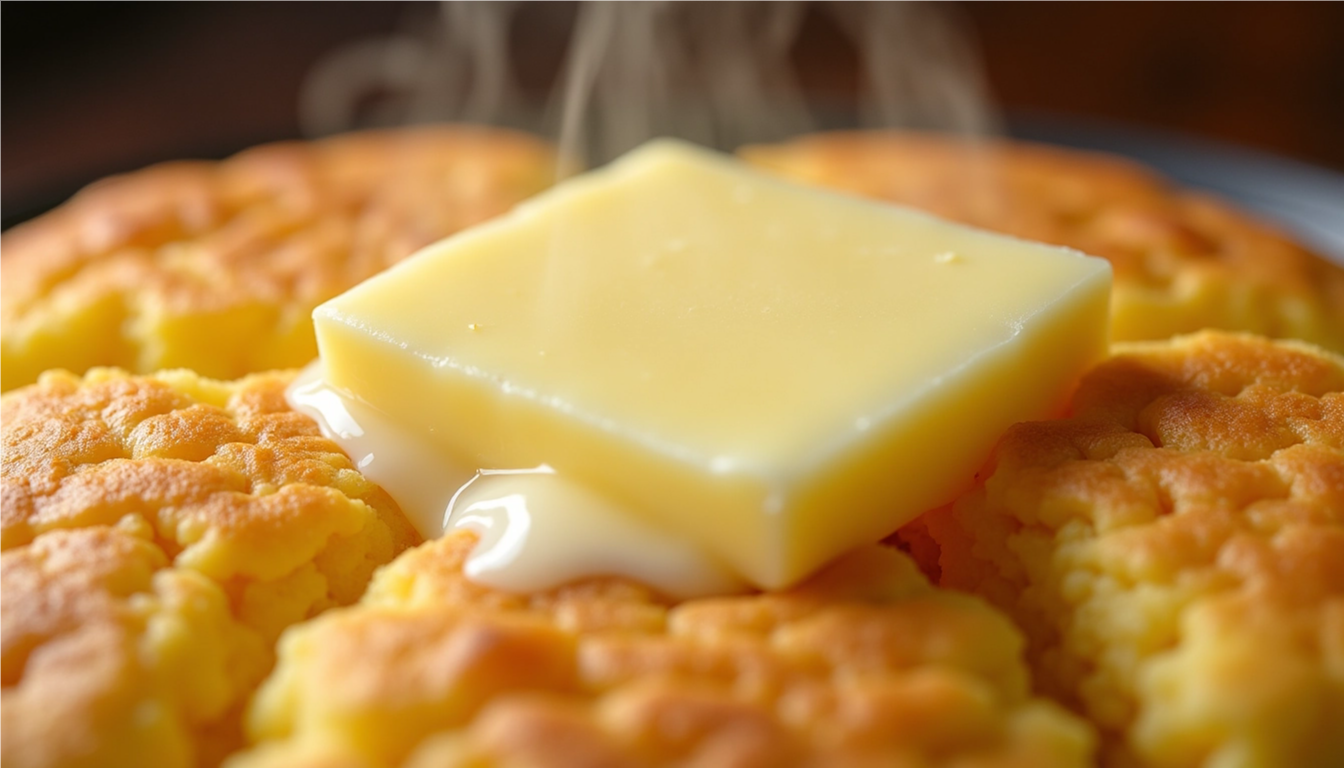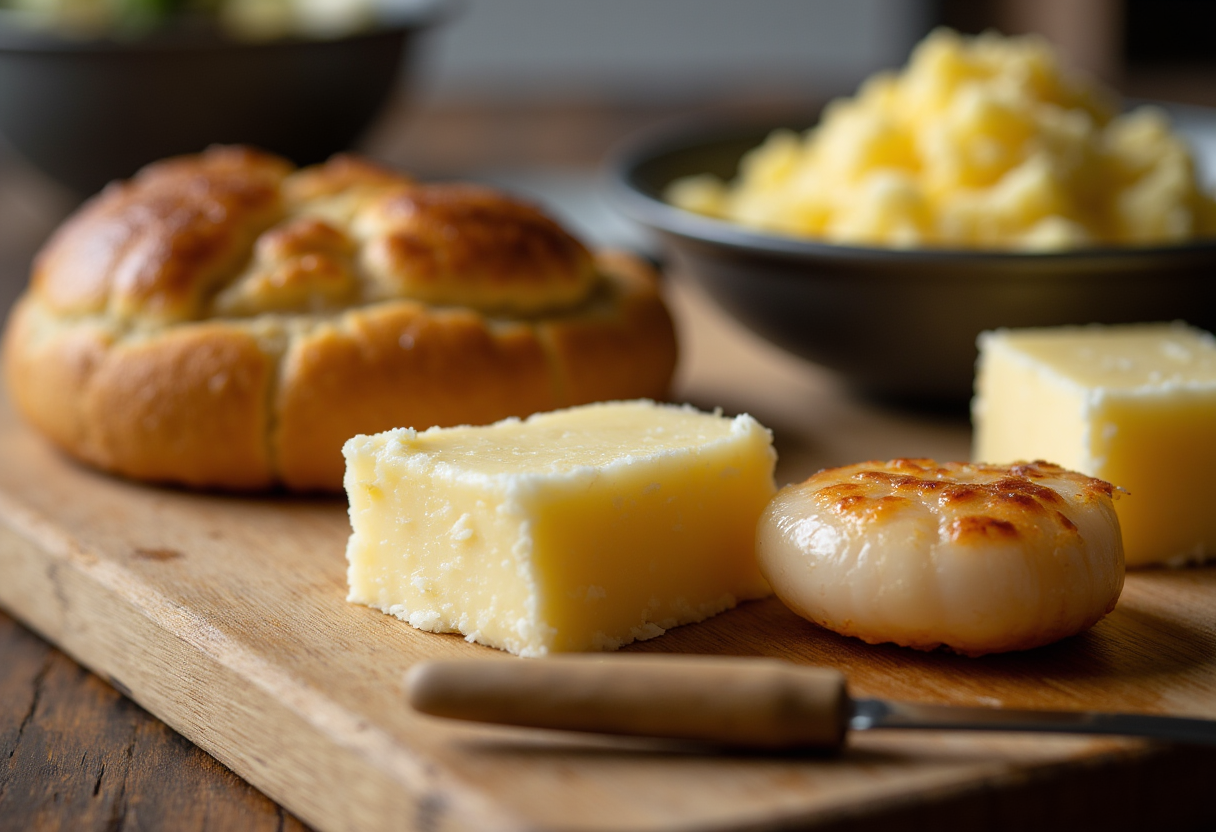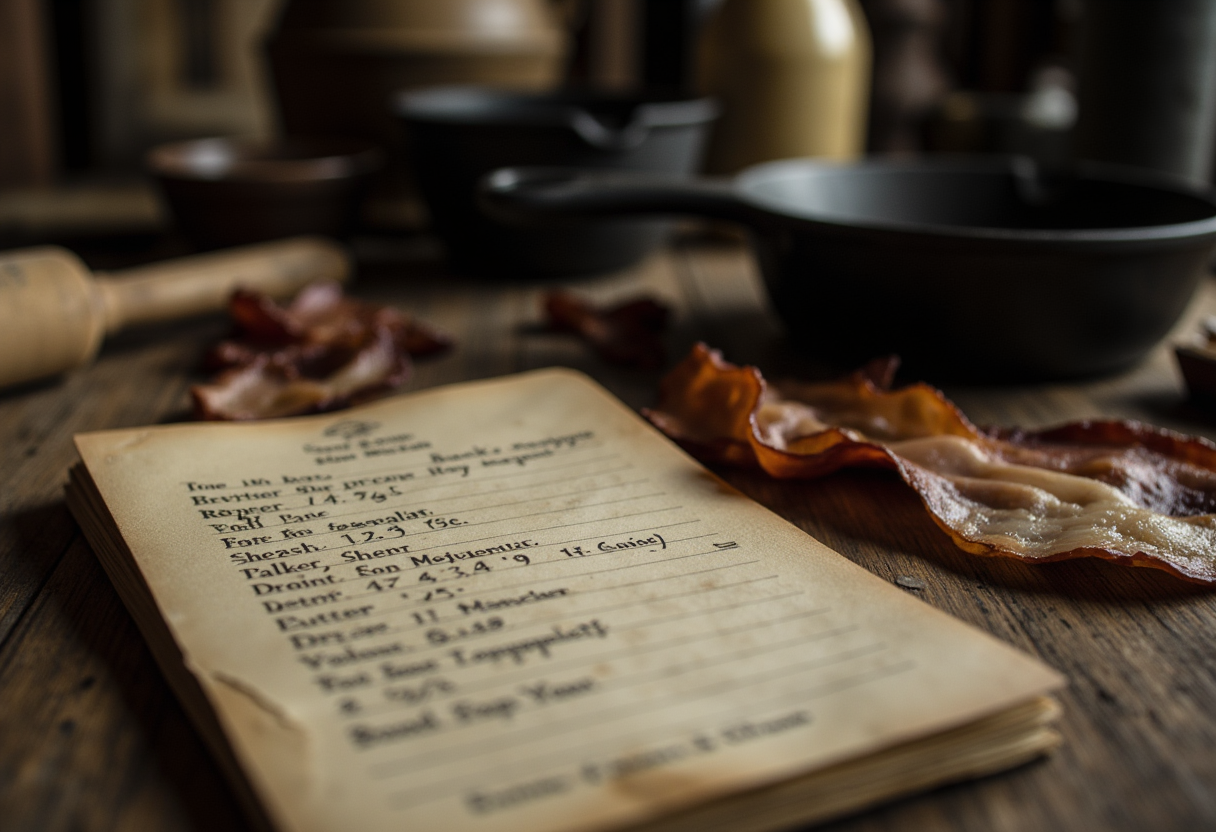Why Butter and Bacon Are Basically Love Languages of The South
a perfectly golden, burnished butter on cornbread
The scent hit Jake first — a warm, golden embrace that seemed to skip past his nose and settle straight into his chest.
It was Grandma Elsie’s cornbread, fresh from the oven: crust burnished to an impossible hue and glistening with a butter application that would make a cardiologist faint and a human spirit sing.
He was six, standing on a kitchen stool and watching, mesmerized, as she slid the pan onto a trivet. Her hands were dusted with flour; her smile crinkled the corners of her eyes like a well-loved map.
A thick, unapologetic slice of butter — golden, defiant — melted into the crags and crevices of the bread, sending tendrils of rich, dairy perfume through the air.
That, Jake realized much later, wasn’t just food. It was an incantation. An edible hug. A love language fluently spoken in grams of fat and heaps of flavor.
Fast forward three decades, and Jake — taller now and slightly less prone to falling off kitchen stools — still finds solace in the culinary embrace of the unapologetically rich.
His kitchen, though less cozy than Grandma Elsie’s, often hums with the same reverence for the foundational elements of true comfort. It’s where dietary fads quietly meet a butter-soaked end.
Because for Jake, and for countless others who know that life’s small joys often hide beneath a crispy edge, butter and bacon aren't mere ingredients.
They’re emotional cues, culinary punctuation, and the undisputed champions of the edible lexicon of love.
Try this: keep reading for a simple bacon-and-butter recipe and a quick tip on rendering bacon fat to make a compound butter that’s perfect at room temperature for spreading on warm bread.
close-up, almost artistic, shot celebrating butter in its various glorious forms. This could include a perfectly seared scallop glistening with butter, a golden-brown, flaky pie crust, and a bowl of fluffy scrambled eggs, all framed by a beautiful, rich pat of butter on a wooden board.
The Art of Cooking: More Than Just Food
Let’s be honest: amid kale smoothies and sprouted quinoa, there’s a quiet rebellion — a perfectly rendered slab of bacon or a glistening pool of melted butter. This isn’t about gluttony. It’s about recognizing the near-spiritual bond we form with certain tastes and textures.
At its heart, food can satisfy more than hunger. Fat, salt, and flavor braided together deliver a primal, almost therapeutic comfort. Turning those elements into something greater — from rendered bacon fat to an herbed compound butter — is an act of care, even artistry.
Why butter matters
Butter is cream elevated: sunshine and pasture churned into gold. It lends flavor, texture, and that silky mouthfeel you notice on toast, in a flaky pie crust, or when you baste a scallop with a knob of browned butter. Remove butter, and you lose a dimension of warmth and indulgence few substitutes can match. For many quick recipes, softened butter at room temperature makes the difference between a meh spread and something you crave.
Why bacon matters
And then there's bacon — salty, smoky, and gloriously fatty. The crackle in a hot skillet signals comfort: warmth, sustenance, eventual happiness. Bacon acts as a culinary catalyst, adding umami and crunch to dishes from salads to baked goods.
Yes, some bakers and chefs even fold cooked bacon into chocolate chip cookie batter for an unexpected savory-sweet counterpoint — a pairing worth trying.
Versatility: how they elevate everyday dishes
A pat of butter melted into a baked potato transforms a plain spud into creamy bliss; a few strips of crisp bacon crumbled over a bowl of soup makes it feel gourmet.
These pantry staples don’t discriminate — they lift simple bowls, bread, and snacks into memorable meals. Use bacon fat to roast potatoes (toss with a tablespoon of bacon fat, salt, and black pepper) for extra depth of flavor.
Quick practical tips
Render bacon fat in a cold skillet: lay strips flat, turn heat to medium, and let the fat slowly melt and brown the meat — total cook bacon time is often 10–15 minutes, depending on thickness.
Transfer cooked bacon to a paper towel-lined plate to drain and crisp. Save the bacon fat in a jar or container for future use; it stores well in the fridge and adds immediate flavor to sautés and roasted potatoes.
an old, stained index card with a handwritten recipe, surrounded by vintage kitchen tools
Mini recipe: Simple Bacon Compound Butter
This bacon butter is a quick way to make a spread that brightens toast, muffins, or baked potatoes.
Ingredients: 1 cup softened butter (room temperature), 3 strips cooked bacon chopped, 1 small garlic clove minced, 1 tablespoon chopped chives or herbs, 1 teaspoon honey (optional), pinch black pepper, pinch salt.
Step 1: In a bowl, mash softened butter until smooth. Step 2: Stir in chopped cooked bacon, garlic, chives, honey, salt, and pepper. Step 3: Form into a log on parchment, chill until firm. Slice to serve; store in a sealed container in the fridge or freeze for longer storage.
How to use it (three quick ideas)
1) Spread on warm bread or toast for instant nostalgia. 2) Dollop on baked potatoes — the butter melts into creamy ribbons. 3) Smear on grilled steak or toss with roasted vegetables for extra savory umami.
Notes on balance and history
Historically, butter and bacon were prized for caloric density and flavor — practical staples in households where making the most of ingredients mattered.
Today, they remain symbols of generosity and comfort, passed down in recipes scribbled on stained index cards. That heritage is part of their power: these ingredients carry memory as much as they carry taste.
This isn’t an invitation to overindulge constantly, but rather to recognize that a careful spoonful of butter or a strip of crisp bacon can transform a meal and a moment. For an easy starter, try the bacon butter recipe above — it’s a simple way to add big flavor to toast, muffins, or potatoes.
Conclusion: Eating as Ritual
Because ultimately, butter and bacon are more than fuel — they’re memory and connection. They’re the quiet understanding between two people sharing a meal, the knowing glance over a plate of perfectly crisp bacon, and a silent nod to the golden sheen of butter on warm sourdough.
When you melt a pat of butter into a pan or listen to bacon sizzle and curl, you aren’t just making food. You’re practicing an ancient, delightful ritual: turning ordinary ingredients into moments that carry flavor and feeling in equal measure.
Try this: Make a quick bacon butter in about 10 minutes — crisp three strips of bacon, chop and fold into 1 cup softened butter with a teaspoon of honey and a tablespoon of chopped herbs. Spread it on toast, dollop it on baked potatoes, or slide a slice under a steak for instant uplift. Store the remainder in a sealed container in the fridge.
If you enjoyed that idea, save the bacon butter recipe and give it a whirl. A small step like this — a simple compound butter, a smear on warm bread — can turn routine into ritual, and feeding someone into a tiny, delicious act of love.
Shareable line: “When butter and bacon meet, memories happen — try our bacon compound butter.”
"Thanks for reading. Until next time, keep exploring Florida's peculiar charm!"
Florida Unwritten Staff
Earl Lee



